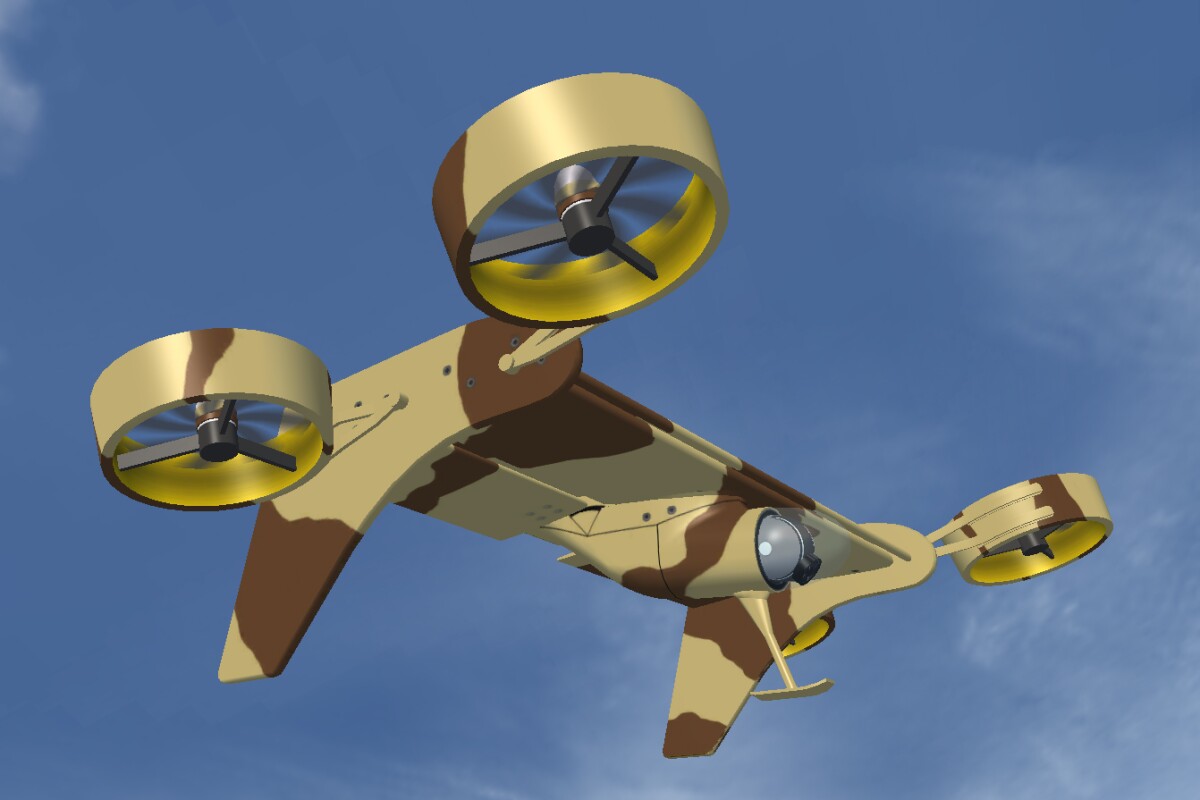The age of UAVs has well and truly dawned but designers aren't resting on their laurels when it comes to improving the capabilities of these multi-talented aircraft. One innovation that's come to the fore recently is the use of an enclosed four rotor platform (see our recent look at the CyberQuad) which offers a number of advantages including greater stability, agility, hovering ability and a smaller footprint. This unique new design from Britain's VTOL Technologies takes this idea a step further, adding four movable rotors to a single "flying-wing" to create an aircraft that claims to deliver a higher payload capacity for its size and up to four times the endurance of current vertical take-off and landing (VTOL) UAV designs.
The company describes the concept as a "superb piece of minimal ‘systems-engineering’ based design, eliminating redundant aircraft features that add weight, overcomplicate flight control, increase drag and reduce endurance." The idea is that less can go wrong with this simplified platform, primarily because the fixed wing requires no control surface actuators. In the event that something does come unstuck, namely the loss of power to one or more of the motors, the UAV can still operate at close to cruising speed with three or even just two rotors operational. The design also boasts resistance to wind gusts, fast stall recovery and in the event of a total loss of power, the shallow glide angle offered by the flying wing design means there's a greater chance of fixing the issue in the air or bringing the craft to ground safely compared to other fixed rotor VTOL designs.
Greater endurance
VTOL Technologies says that the patent-pending design offers three to four times the endurance of current VTOL UAV’s using an equivalent power source as well as faster cruise speeds. When compare to fixed-wing UAVs, the Flying-Wing is said to achieve twice the endurance.
Thrust-vectoring for greater versatility
Controlling flight through the use of thrust-vectoring rather than ailerons gives the concept a number of clear advantages over fixed-wing designs - it can hover, operate in tighter spaces such as urban environments, launch from moving vehicles and using reverse thrust, land on the deck of a ship in rough seas
Roles beyond the battlefield
After spending eight years developing the Flying-Wing, VTOL Technologies has recently submitted a concept study to the UK MoD and hopes to fast track the development of the vehicle for deployment in military operations like Afghanistan as well as in counter piracy operations for the London 2012 Olympics.The Flying-Wing design could also have applications on fields as diverse as traffic monitoring, crime and border surveillance, humanitarian relief and pollution monitoring
The current specs for the concept (see below), show a maximum endurance of two hours, a hover time of 0.5 hours and a range of 37 miles (60km)using lithium polymer cells as the power source, but the company says that ongoing work into green fuel-cell technologies could quadruple this figure within the next couple of years.
Technical Details
- Gross Takeoff Weight: 3.25Kg
- Width: 1.25m
- Length: 0.61m
- Height: 0.28m
- Max forward speed: >80kts
- Max sideslip: 15kts
- Max endurance: >2 hours
- Hover endurance: 0.5 hours
- Range: 60km
- Payload: EO or IR camera
- Noise levels: <65db [Est.]
- Power Source: LiPo cells







